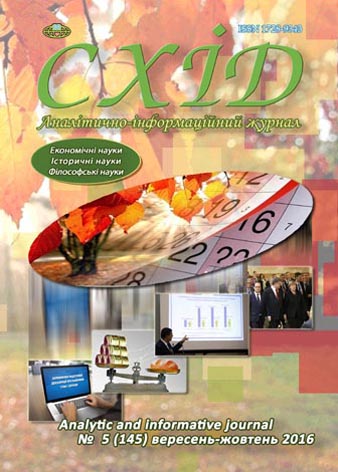Informatization as an aesthetic strategy of modern screen culture
DOI:
https://doi.org/10.21847/1728-9343.2016.5(145).78629Keywords:
screen culture, informatization, cinema, television, hybridization, eclecticism, TV series, medium shotAbstract
This work is aimed to identify the cultural changes that have occurred as a result of informatization. The article investigates the strategies of contemporary screen culture aimed to satisfy human needs in information. The analysis of technical improvement of information possibilities of screen media is based on J. D. Bolter's and R. Grusin's theory of remediation. The article identifies informational potentials of visual novel (contemporary TV series), which is the result of remediation of TV, movie and literary novel. In addition, the article investigates the process of informatization by means of screen space formation or, in other words, by screen aesthetics. The article identifies and analyzes the hybridization strategy and the strategy of visual eclecticism. Hybridization strategy is a method to combine information of different nature, whereupon more truthful visual stories are created. It is mainly used in movies and video games. The strategy of visual eclecticism that allows viewers (users) to perceive multiple information flows, mainly related to the screen space of modern television.
The article, basing on G. Deleuze's concept of cinematic images, analyzes the informational characteristics of medium shot and the reasons of its frequent usage in modern movies. The comparison of essential characteristics of close-up shot and medium shot is made. It is determined that the change of emphasis on medium shot and full shot in contemporary cinema is related to the change of priorities in aesthetic human needs, because today the sense of presence of information becomes more important than emotions.
The article notes the important problem of attitude changing towards information - the loss of its essential content characteristic (due to its transition into aesthetic form). Screen aesthetics that now is served under the guise of information gradually replaces the value of the latter. The transition of information to the field of aesthetics says that its main essence is lost, because quantitative characteristics and the fact of presence are becoming more important than its quality.Downloads
References
Gornykh, A. and Usmanova, A. (2009), Internet Aesthetics and visual consumption: to the question of the essence and specificity of the Runet, Belintellectuals, available at: http://belintellectuals.eu/media/library/Cont_Shift_Gornykh_rus.pdf (rus).
Deleuze, G. (2004), Cinema, Ad Marginem, Moscow, 622 p. (rus).
Kovaliv, I.(2007), Literary Encyclopedia: in 2 vol., Vol. 2, Academia, Kyiv, 624 p. (ukr).
Lotman, Yu. (2002), Articles on the semiotics of culture and art, Academic Project, Saint Petersburg, 543 p. (rus).
McLuhan, M. (2012), The Medium is the Massage, Informatsionnoye obshchestvo: a collection, Publishing house AST, Moscow, 2004, pp. 341-348 (rus).
Mikhalkovich, V. (1998), On the essence of TV, Television and Radio Workers' Institute for Advanced Studies, Moscow, 49 p. (rus).
Top highest-grossing films (2016), Kinopoisk, available at: http://www.kinopoisk.ru/box/best_world/ (rus).
Yampolsky, M. (2011), Cinematic man. Notes about cinematic language and anthropology, Seance, 45/46, available at: http://seance.ru/n/45-46/kinematograficheskij-chelovek-zametki-okinoyazyke-iantropologii/ (rus).
7 key web design trends on 2015 (2014), Habrahabr, available at: http://habrahabr.ru/company/sketchbuilder/blog/243611/ (rus).
7 web design trends in the near future (2015), Habrahabr, available at: http://habrahabr.ru/post/260929/ (rus).
Bell, D. (1971), The Post-Industrial Society: The Evolution of an Idea, Survey (Ind), 79, p. 158 (eng).
Bolter, J. D. and Grusin, R. (1999), Remediation: Understanding New Media, MIT Press, Cambridge, 295 p. (eng).
Manovich, L. (2008), Introduction to Info-Aesthetics, Modernity, Postmodernity, Contemporaneity, pp. 333-344, available at: http://manovich.net/content/04-projects/060-introduction-to-info-aesthetics/57-article-2008.pdf. doi: 10.1215/9780822389330-022.
Manovich, L. (2001), Post-media Aesthetics, available at: http://manovich.net/content/04-projects/031-post-media-aesthetics/29_article_2001.pdf (eng).
Manovich, L. (2001), The Language of New Media, MIT Press, Cambridge, 307 p. (eng).
Manovich, L. (2007), Understanding Hybrid Media, available at: http://manovich.net/content/04-projects/054-understanding-hybrid-media/52_article_2007.pdf (eng).
Downloads
Published
How to Cite
Issue
Section
License
Copyright (c) 2016 Yevhen Vorozheikin

This work is licensed under a Creative Commons Attribution-NonCommercial-NoDerivatives 4.0 International License.
1. Authors bear responsibility for the accuracy of facts, quotations, numbers and names used.
2. Manuscripts are not sent back.
3. The publisher does not always agree with the authors' opinion.
4. The authors reserve the right to authorship of the work and pass the first publication right of this work to the journal under the terms of a Creative Commons Attribution-NonCommercial-NoDerivatives 4.0 International License. This license allows others to distribute (copy) the published work for non-commercial purposes, provided there is mandatory attribution to its authors and a link to the first publication in our journal.
5. The authors have the right to conclude separate supplement agreements that relate to non-exclusive work distribution in the form in which it has been published by the journal (for example, to upload the work to the online storage of the journal or publish it as part of a monograph), provided that the reference to the first publication of the work in this journal is included.

